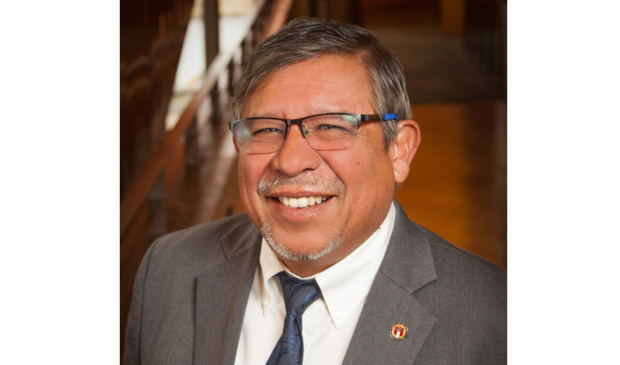Renteria appreciates slow but steady progress to affordable, equitable city in 2019
Friday, December 20, 2019 by
Ryan Thornton As he did in 2019, Council Member Pio Renteria will continue working to create a more integrated, walkable and resilient city in the next year.
“Historically, Austin is a city that has been segregated, and we’re trying to change that,” he told the Monitor during an interview last week.
Renteria praises the city’s success in creating the Mueller community, where he says people of all races and incomes continue to live peacefully in a walkable environment. He acknowledges, however, that most developments don’t come with the opportunity to build out a master plan on city-owned land.
With The Grove, for example, a mixed-use, planned unit development currently under construction in Northwest Austin, Renteria lamented that the city was only able to require that 10 percent of units be affordable at 80 percent of median family income. Fortunately, the city was able to negotiate the affordable units down to 60 percent MFI, but Renteria noted the contrast with Mueller, which includes 26 percent affordable units today.
“That’s what happens when we don’t own the land,” he said.
Although most projects are smaller and take more time compared to Mueller, Renteria is not discouraged in his conviction that the city will end up in good shape.
“That’s the way things work in Austin,” he said. “Things just don’t happen quickly. … If we’re going to do it, we’re going to do it slowly and right, instead of rushing it.”
Renteria notes the more than 20-year process involved in the completion of the Emma S. Barrientos Mexican American Cultural Center in 2007. Looking forward, he said, he is ready to see that work continue as the center master plan is implemented using part of the $56.5 million dedicated to cultural center improvements in the 2018 bond.
The development at Plaza Saltillo, too, he said, has taken a very long time to take shape.
“There was a lot of opposition, I have to admit, at the beginning, but I think people are happy with what’s coming in there,” he said. “It’s amazing that the older people that live there, especially at Chalmers Courts, were for it; they wanted something within walking distance.”
Renteria is also pleased with the progress made this year on the renovation of Chalmers Courts. Last month, the Housing Authority of the City of Austin held a ribbon-cutting ceremony for Chalmers South, an 86-unit building, and announced the completion of phase one of the entire Chalmers Courts plan. Construction of Chalmers East also broke ground last month and is scheduled to open next year.
This year, Renteria worked to increase the supply of affordable housing and prevent displacement in East Austin. In the city’s only homestead preservation district – District A, spanning much of East Austin from Lady Bird Lake up to 38th½ Street in Cherrywood – Renteria says he and his colleagues will now be able to secure twice as much funding from the district’s tax increment financing.
Renteria said this somewhat makes up for the fact that Gov. Greg Abbott killed a bill in 2017 that would have allowed the city to increase the number of homestead preservation districts. By raising the percent of tax money dedicated to affordable housing and preventing displacement from 10 to 20 percent, he said they expect to increase the district’s funds to $2 million next year.
As a whole, Renteria said the city learned to make better use of its funds for development projects. In the past, he said, projects always went over their budgets and took too long because the city would try to change things along the way. Now, he said, as with projects like the Highland Mall development, the city decides what it wants, lets contractors bid and then allows them to do their work.
Renteria’s philosophy on development is simple: “We’re not professionals; let the professionals do the work.” Compared to what it would have cost the city to do the project, he said this hands-off approach saved the city around $30 million.
Going into 2020, Renteria has his mind on a residential development in the Govalle neighborhood that is planned for a site that was once a pecan grove. The request for proposal has already been sent out and the site has been in the works for four years. Residents, however, are fighting to save the trees, some wanting the grove to go to a public use like a neighborhood park. Renteria wants the housing stock.
“It’s a slow process, but we’ll eventually get there and make everybody happy, hopefully.”
Photo courtesy of the city of Austin.
The Austin Monitor’s work is made possible by donations from the community. Though our reporting covers donors from time to time, we are careful to keep business and editorial efforts separate while maintaining transparency. A complete list of donors is available here, and our code of ethics is explained here.
You're a community leader
And we’re honored you look to us for serious, in-depth news. You know a strong community needs local and dedicated watchdog reporting. We’re here for you and that won’t change. Now will you take the powerful next step and support our nonprofit news organization?






